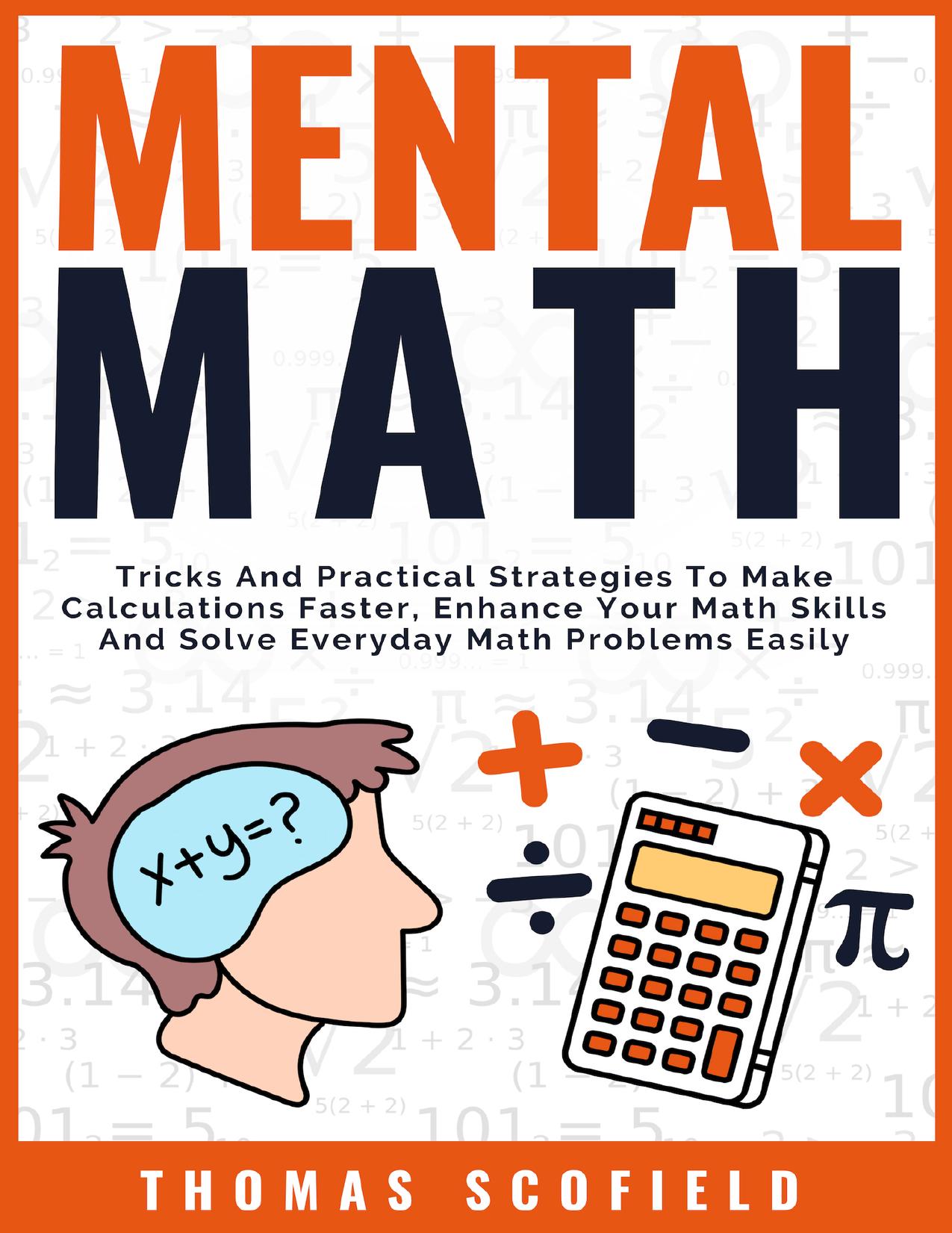Mental Math: Tricks And Practical Strategies To Make Calculations Faster, Enhance Your Math Skills And Solve Everyday Math Problems Easily by Scofield Thomas

Author:Scofield, Thomas [Scofield, Thomas]
Language: eng
Format: epub, pdf
Published: 2018-11-07T16:00:00+00:00
Chapter Five: Mean, Median, and Standard Deviation in Everyday Life
Averages are extremely useful in that they tell us what the normative figures in a sequence are. There are many different types of averages, all of which give us different and unique perspectives on what is going on in the center of our distributions. Of these types of central measurement, the main ones are median, mean, average, mode, and range. This chapter will be dedicated to the study of these measurements.
Mode, median, and mean are all different types of averages. Averages are very common in any type of statistics but these three are usually the most common types that you will come into contact with. Of these three, the mean is probably the one which is most commonly calculated to by most people. To find the mean in a set of data, you must first add up all the numbers presented to you and then divide that sum by the amount of numbers in the set of data. The median is the middle of all of the numbers. This is usually much easier to find than the mean in any given data set. Just keep in mind that your numbers have to be arranged from smallest to largest when accounting for the median, so you may need to do some rearranging of figures before you are able to arrive at your number. The mode is the only one of these three that has a possibility of not occurring at all throughout a data set. The mode is simply the number that occurs most often throughout the set of data. If no numbers are repeated, or none are repeated any more than any others, then there will be no mode for the set of data. In addition, a range is a difference between the largest and smallest numbers within a set of data.
We should now start on some examples of value sets and how to solve for their averages. Let us now find the range, mode, median, and mean for this value set:
Findings averages in data sets
13, 18, 13, 14, 13, 16, 14, 21, 13
We should start off by calculating the mean, as it is the most common average. We would do this here by adding up all of the terms and dividing by the number of all of the terms. This would look something like this in equation form:
(13 + 18 + 13 + 14 + 13 + 16 + 14 + 21 + 13) ÷ 9 = 15
So, our mean has turned out to be 15 in this case. You may have noticed that this number was not included in the original set of terms. This is common when finding the mean. They sometimes do not occur within the original data set.
Next, we need to find the median. The median is the middle value within the number set, so in order to find this, we first need to reorder our dataset from the lowest to the highest numbers. This would
Download
Mental Math: Tricks And Practical Strategies To Make Calculations Faster, Enhance Your Math Skills And Solve Everyday Math Problems Easily by Scofield Thomas.pdf
This site does not store any files on its server. We only index and link to content provided by other sites. Please contact the content providers to delete copyright contents if any and email us, we'll remove relevant links or contents immediately.
| Algebra | Calculus |
| Combinatorics | Discrete Mathematics |
| Finite Mathematics | Fractals |
| Functional Analysis | Group Theory |
| Logic | Number Theory |
| Set Theory |
Weapons of Math Destruction by Cathy O'Neil(5048)
Factfulness: Ten Reasons We're Wrong About the World – and Why Things Are Better Than You Think by Hans Rosling(4031)
Factfulness_Ten Reasons We're Wrong About the World_and Why Things Are Better Than You Think by Hans Rosling(2759)
Descartes' Error by Antonio Damasio(2744)
A Mind For Numbers: How to Excel at Math and Science (Even If You Flunked Algebra) by Barbara Oakley(2694)
TCP IP by Todd Lammle(2646)
Applied Predictive Modeling by Max Kuhn & Kjell Johnson(2487)
Fooled by Randomness: The Hidden Role of Chance in Life and in the Markets by Nassim Nicholas Taleb(2420)
The Book of Numbers by Peter Bentley(2412)
The Tyranny of Metrics by Jerry Z. Muller(2407)
The Great Unknown by Marcus du Sautoy(2192)
Once Upon an Algorithm by Martin Erwig(2152)
Easy Algebra Step-by-Step by Sandra Luna McCune(2123)
Practical Guide To Principal Component Methods in R (Multivariate Analysis Book 2) by Alboukadel Kassambara(2099)
Lady Luck by Kristen Ashley(2079)
Police Exams Prep 2018-2019 by Kaplan Test Prep(2039)
Linear Time-Invariant Systems, Behaviors and Modules by Ulrich Oberst & Martin Scheicher & Ingrid Scheicher(1986)
All Things Reconsidered by Bill Thompson III(1964)
Secrets of Creation, Volume 1: The Mystery of the Prime Numbers by Watkins Matthew(1874)
